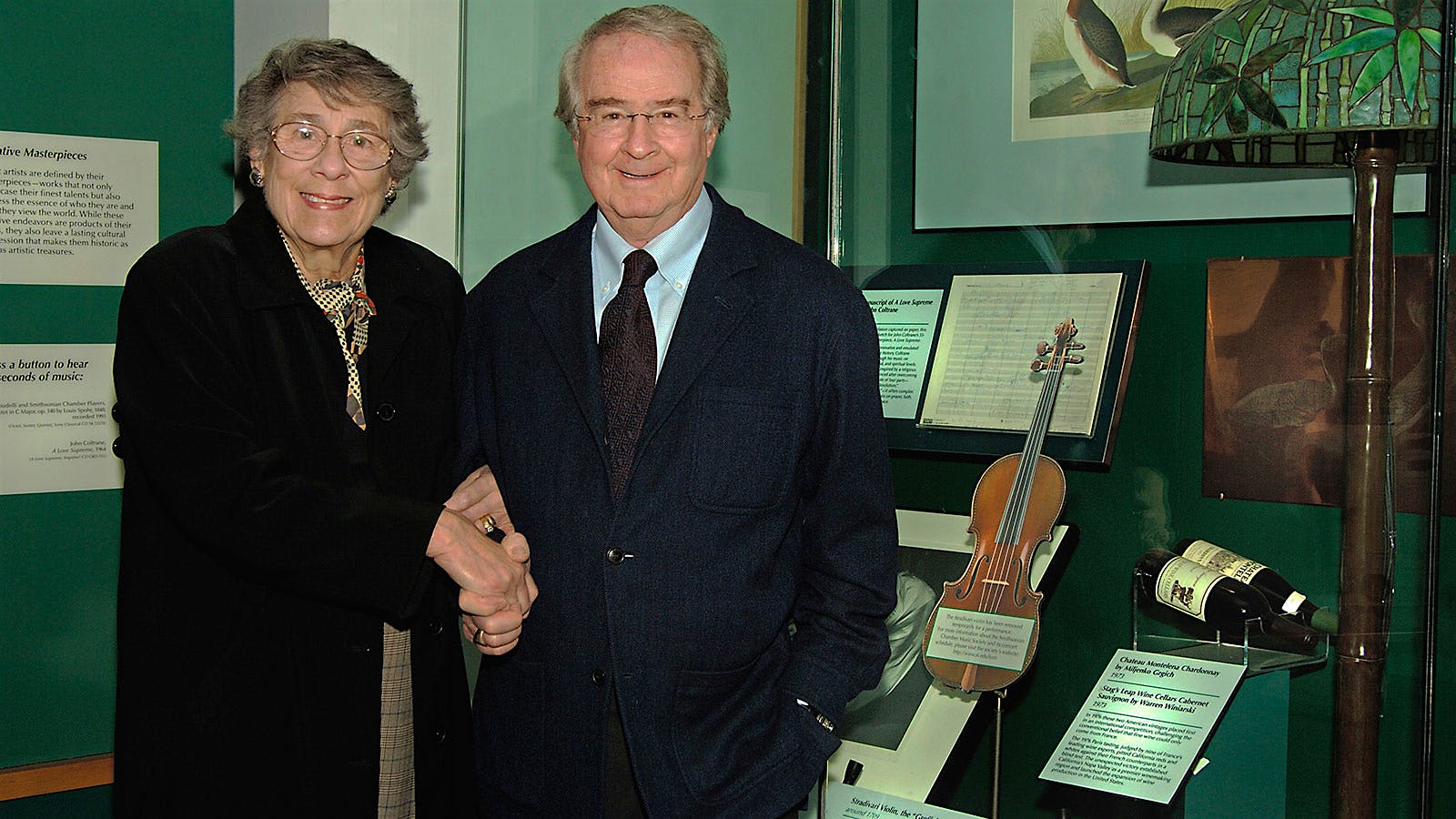Products You May Like
Winemaker Warren Winiarski, founder of Stag’s Leap Wine Cellars and owner of Arcadia Vineyards, has died at the age of 96.
In 1970, Winiarski purchased a 50-acre fruit orchard and ranch in Napa Valley and began planting Cabernet Sauvignon and Merlot. He started making wine from those plantings, along with some existing Petite Sirah vines, debuting his Stag’s Leap Wine Cellars label in 1972.
Winiarski’s winery was among a prominent class of wineries that debuted that year, a group of nearly two dozen that included Burgess Cellars, Caymus, Chateau Montelena, Clos du Val, Diamond Creek, Silver Oak, Spottswoode and Stags’ Leap Winery (located just a mile from Winiarski’s similarly named operation), among others. The vast majority of the group focused on Cabernet Sauvignon and went on to define California and Napa Valley wine for a generation.
In 1976, Winarski entered his 1973 Stag’s Leap Wine Cellars S.L.V. Estate Cabernet Sauvignon bottling in a tasting organized by British wine retailer and writer Steven Spurrier that pitted California wines against their varietal counterparts from France in a blind tasting. The panel of French judges gave top honors to the Stag’s Leap wine in the Cabernet tasting against top Bordeaux (Chateau Montelena won the Chardonnay tasting against Burgundies). A brief writeup of the Paris Tasting of 1976 (aka The Judgement of Paris) appeared in Time magazine, helping to bring international recognition to California wine. In 2012, Winiarski donated a bottle of the 1973 Stag’s Leap Cabernet to the Smithsonian National Museum of American History’s permanent collection.
Stag’s Leap became best known for its Cabernets—most notably its Cask 23 Cabernet blend, along with its Fay and S.L.V. bottlings—though it produced a range of wines, including Chardonnay, Merlot and Sauvignon Blanc.

Winiarski’s lithe figure, shock of swept-back hair and erudite nature created a quietly dashing and academic presence. He was generous with his time and knowledge, and developed many friends and mentor relationships with prominent winemakers in the valley.
“He was a father figure, friend and mentor to me all in one,” said Michael Silacci, winemaker for Opus One, who worked with Winiarski at Stag’s Leap Wine Cellars from 1995 through 2001. “Our foundation was his unwavering dedication to perfection and his deep care for oak trees, streams, grapevines, wine and the environment. As a mentor, his questions, insights, perspectives and sense of humor were unparalleled. I learned to completely vet and prove an idea, principle or practice to myself before sharing it with him. I knew that Warren would challenge my ideas and look for holes. Warren was a reference and set a standard for excellence in Napa Valley.”
While piloting his winery, Winiarski was also a leader for Napa Valley’s wine industry as a whole. He was among the first proponents of the Napa Agricultural Preserve in 1968 and also helped to define the labeling requirements for wines that carry the Napa Valley AVA designation.

Winiarski oversaw 35 vintages at his winery before he sold his operation in 2007 to a partnership of Washington’s Ste. Michelle Wine Estates and Tuscany’s Piero Antinori for $185 million. (It’s now owned fully by Antinori.) At the time, the price seemed astronomical, jolting the valley. From the estate holdings, Winiarski kept Arcadia Vineyard, initially purchased in 1996 and located in the Coombsville AVA. He continued to produce his own Cabernet Sauvignon, Chardonnay and Merlot bottlings.
Winiarski’s Early Life
Winiarski was born in 1928 in a heavily Polish neighborhood of Chicago, Illinois. His parents owned a livery business, and his father made non-grape wines for home consumption. In his youth, Winiarski was initially on an academic track, studying western classics at St. John’s College in Annapolis, Maryland, from which he graduated in 1952. While there, he met his wife, Barbara; they were married in 1958. He went on to pursue post-graduate studies at the University of Chicago, spending a year in Italy.
During his time in Europe, he decided he wanted to be a winemaker. He cut his studies short and returned to the U.S., eventually moving to California with Barbara in 1964. He secured his first job as assistant winemaker to Lee Stewart at Souverain Cellars. He then became the first head winemaker at Robert Mondavi Winery in 1966. He left Mondavi in 1968 and briefly made wine in Colorado, using California grapes, before returning to California in 1970.
Winiarski was an active philanthropist. His family foundation donated $50 million to his alma mater, St. John’s College, as well as 200 acres to the Land Trust of Napa Valley. In 2021, Warren and Barbara made a $4 million bequest to the Smithsonian Institution to support the museum’s American Food History Project. A long-time supporter of environmental efforts, he had also recently donated $450,000 to fund research to update the Amerine-Winkler Index, an industry standard that defines which varieties can perform well in which regions, to reflect the changing climate.
